All about planting plums
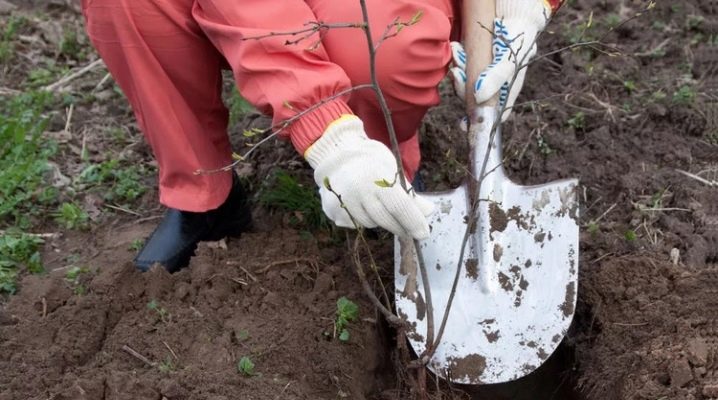
Knowing everything about plum planting and aftercare is the only guarantee of success. We'll have to figure out in advance how to plant the seedlings correctly, at what distance to plant them most correctly. It is very important to figure out when it is better to plant a plum in the Moscow region in open ground, as well as whether it is possible to plant it next to an apple tree.

When is the best time to plant?
Planting plums, like other fruit plants and shrubs, should be timed to a strictly defined moment. Having made a mistake and choosing the wrong time, you can face very unpleasant consequences. In the spring months, you should focus on March or April. It is very important to catch the moment when the buds have not yet begun to bloom, but the air is steadily warmed up to 5 degrees and above. It is most rational to plant plums in the Moscow region and in the Middle Lane at the end of April.
For farmers in the southern regions - Krasnodar, Stavropol Territories and other regions of the Caucasus - the need to plant plums comes already in the last decade of March. But for the Ural and Siberian summer residents, it is better to shift the corresponding dates to the first ten days of May. But sometimes they are engaged in planting in the fall. The most typical landing is in September or October.
It is necessary to ensure that the temperature reaches about 10 degrees during the day. It should be about 5 degrees at night. It is advisable to choose the moment when there are about 30 days left before the lasting onset of frost. Siberian and Ural gardens and lands in the Leningrad Region are a different matter, planting plum trees in them is possible at most until the end of September, better in the first half of it. In the southern regions, the autumn planting period covers September and October, but in a normal year it is better for farmers near Moscow to finish work before October 15.
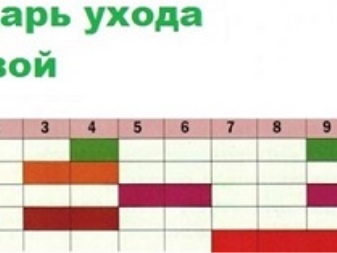

Sapling selection
But even the most scrupulously adhered to the terms will not help if you choose a plum seedling illiterately, rely on the words of the seller. A common mistake is buying a tree in a container. Yes, a potentially closed root system with a clod of earth takes root more effectively. However, we must not forget what kind of world we live in, and that for many nurseries, economy comes first, not the interests of buyers. It is best to choose those seedlings in which you can see for yourself what the root looks like - it is by it that you can judge the prospects of the plant.
Thick, large roots with a large number of branches will be the best option. However, forks close to the ground, on the contrary, are contraindicated. Bifurcations of the stem and other defects, which cannot be seen on a closed seedling, may be critical.
It is important to check that the vaccine is not too crooked or crooked. There should be about 10 cm from the inoculation site to the ground.
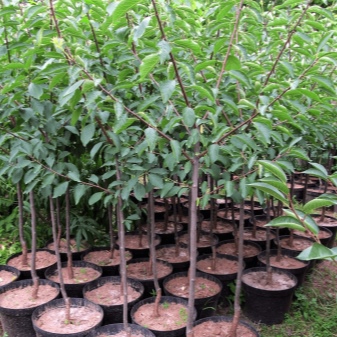

Seat selection
Often gardeners are interested in whether it is possible to plant a plum next to an apple tree or not. These crops show really high compatibility. But it is provided only with the right approach. It is very important that both trees are young and at a distance of at least 6-8 m. Violation of this rule leads to the fact that a more developed plant will suppress a too low crop with its shadow.
But the black elderberry even demonstrates increased compatibility. It not only adjoins well with plum plantings, but also effectively protects them from the invasion of aphids.As for the pear, it itself harms the plum and receives harm in return. Breeding such trees nearby, and even in the same summer cottage, can hardly be considered a good idea. Not everywhere it is possible to maintain the distance between such "enemies" of at least 7-10 m - and if it cannot be ensured, then it makes no sense to take risks.
Currants are also hostile to plums. Important: this hostility also applies to related fruit crops, because currant plantations are mostly lonely.
Neighborhood with any coniferous crops is strictly unacceptable, no matter how beautiful it looks. Fallen needles will acidify the soil too much, while the plum grows well only in neutral areas. Neighborhood with walnuts and birches is also prohibited.
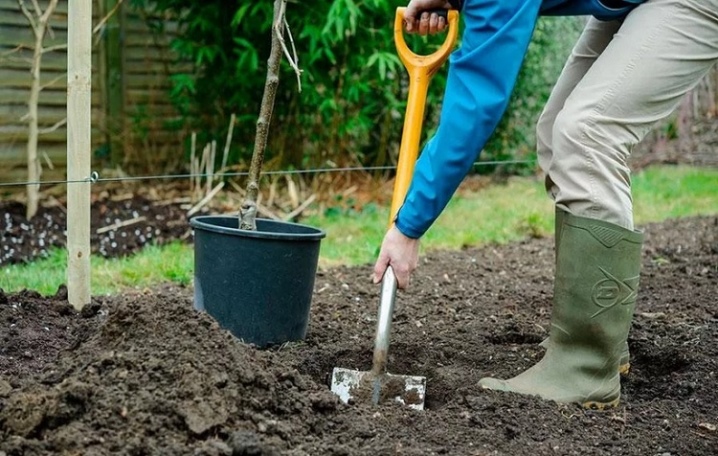
Plum is very harmful to cherries. But cherries, peaches, apricots, cherry plums will be the best neighbors. But it is important to understand that only with normal, not too thick plantings, when there is no competition for water and nutrients, problems are completely excluded. If this rule is not observed, gardeners should only blame themselves. From surface crops, meadow bluegrass and white clover are well combined with plums; but tobacco, potatoes contribute to the infection of fruit trees.
Finding out whether different varieties of berry crops are compatible is best from their official description. Be sure to take into account the need for pollination. But when choosing a site in the country for planting plums, you should pay attention to other points. It is very important that there is no stagnation of groundwater. All places where they approach the surface closer than 1.5 m (and preferably 2 m or more) should be avoided.
A fairly significant requirement is an abundance of sunlight. Any shading will adversely affect the condition of the tree. The distance to any building should be at least 3 m. The soil in a skillfully chosen place must be loose and fertile. It is advisable to avoid planting plums where a piercing wind can blow.
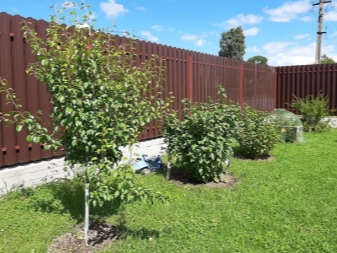
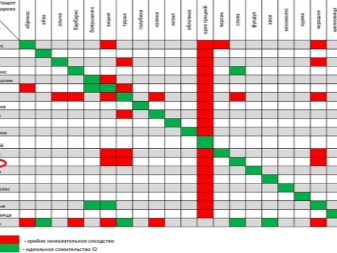
Preparation
Sapling processing
Some gardeners buy planting material in the fall and use it in the spring. In this case, good wintering is ensured only by burying. The depth of the trench for the winter should be about 60 cm. After removing the plant in the spring, it should be carefully examined and the deformed roots should be cut off. All cut points are supposed to be sprinkled with activated carbon.


Pit
The digging of the planting hole is carried out approximately 20 days before the procedure. If it is prepared too late, then the soil regime will not have time to rebuild properly by the right moment, and the result will disappoint farmers. The depth, as well as the value along all axes, is 60 cm. It is very important to put fertile soil mixed with improving mineral complexes into the hole at once. At the same time, a stake is placed, then turning into a support.
To apply fertilizers that the plum loves, it is necessary to mix the combination with the initially filled earth:
- 20 kg of humus or compost;
- 20 kg of peat;
- 0.3 kg superphosphate;
- 0.08 kg of potassium sulfate (on acidified soils, the amount of all these components is doubled).
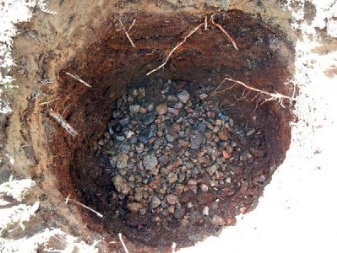
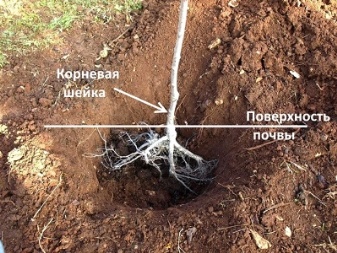
Landing scheme
It depends on the characteristics of the plant itself. So, for varieties prone only to weak growth, it is necessary to maintain a distance between the holes of 2.5-3 m. At the same time, the row spacing is 3-4 m. If the culture tends to develop actively, then the distances are increased to 3-4 and 4-5 m, respectively.
According to the law, a distance of 4 m must be maintained in the garden from the fence to any fruit tree (including the plum); it is necessarily supported both for the seedling and for the adult specimen, starting from the extreme points.
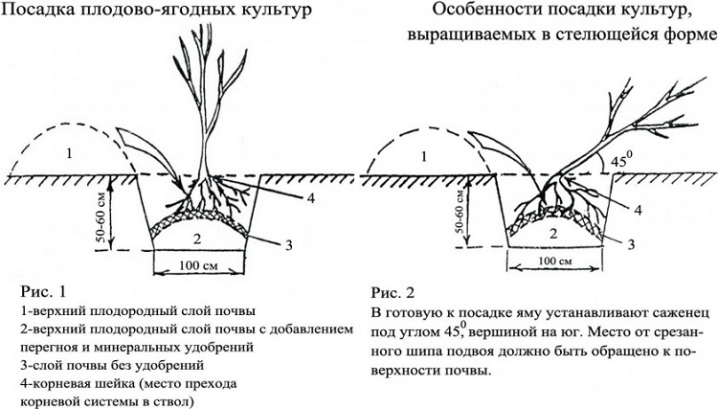
How to plant correctly?
In autumn
The most important point is that predominantly zoned hybrids with guaranteed cold resistance are suitable for this purpose. It is better to make a mound in a hole right away. But if it was not prepared in advance, then it is created immediately before disembarkation.Having placed the seedling on the tubercle, gently straighten the roots. The next steps are as follows:
- pour out the prepared soil mixture so that the tree holds well;
- shake the seedling gently so that even minor voids do not remain;
- check that the root collar does not go under the surface of the soil;
- crush the ground a little and water it thoroughly;
- perform a sapling garter;
- form a parapet, framing the near-trunk circle, so that the water does not spread too actively;
- sprinkle the near-trunk area with sawdust or brushwood (other types of mulch manifest themselves much worse).

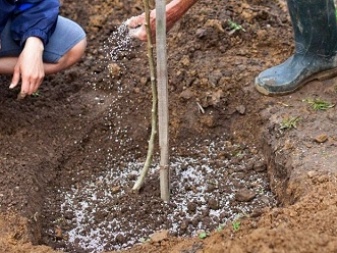
In the spring
Although this option leaves much more time for the culture to take root, the key rules still need to be followed flawlessly. In this case, planting holes have been prepared since autumn. The plums dug up earlier for the cold season are carefully dug up and their roots are placed in a semi-liquid "chatterbox". To prepare such a "chatterbox" is necessary from a combination of clay with mullein.
Further, a peg is driven into the bottom of the pit. It will hardly be possible to do without it, as in the fall. When the stake is driven in, it is time to check the safety of the roots and remove their deformed areas. The roots of the seedling placed on the surface of the tubercle should also be straightened. A half-filled hole is watered using 30 liters of water; peat or sawdust is used for mulching, check carefully so that the root collar is not buried.
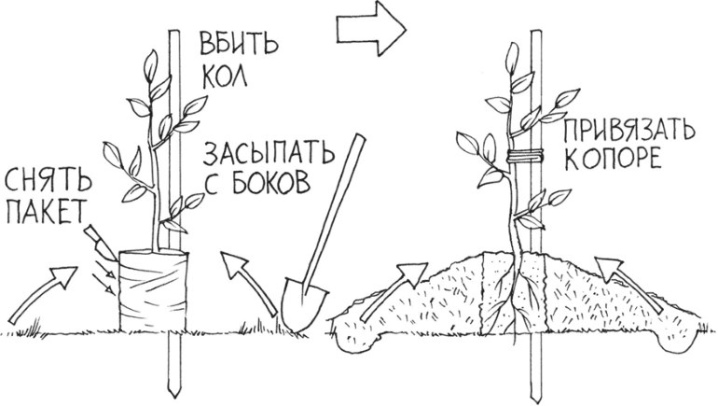
The nuances of planting a tree with a closed root system
In this case, the approach is naturally different. Most often, seedlings with closed roots are planted in summer. It is very important that the root system remains unchanged, any damage is unacceptable. Young trees are shaded in the sunniest hours, thereby carefully avoiding overdrying and burns. It is necessary to grow seedlings in:
- containers;
- bags;
- nets;
- specialized containers.
The optimal time for disembarkation is in June. This will both prevent freezing and ensure the adaptation of trees in a new place. Occasionally, in the southern regions, plums are planted in early autumn. In this case, a protective shelter is formed. For him use:
- needles;
- cardboard;
- fir paws.
The size of the planting pit should correspond to the size of the earth clod. Before disembarking, the recess is poured abundantly with water. But not simple, but with the addition of drugs that suppress parasites. It is useful to dissolve in water and insecticides. To make it easier to pull the seedling out of the container, the soil in it will also have to be watered properly. It is necessary to ensure that the clod of earth does not disintegrate. Its top should be level with the edge of the pit. Each plum is watered using 20 liters of water.
So that there are no voids in the soil, they are sprinkled with garden soil and thoroughly trampled down. 3 pegs are driven into the edges of the pit, and then, stepping back from the near-trunk strip 0.6-0.7 m, they dig a ditch used for irrigation.
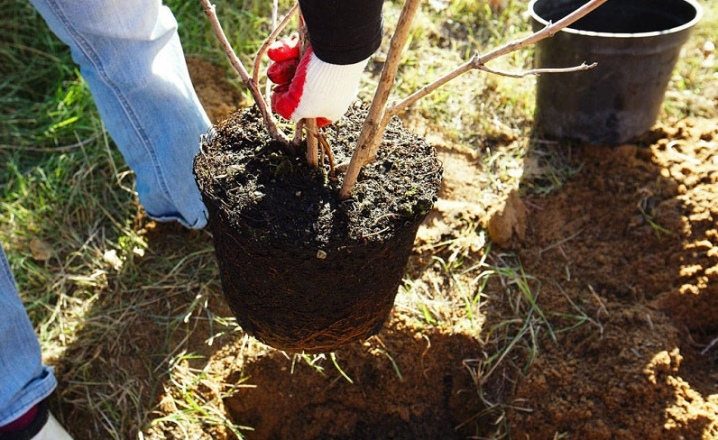
Follow-up care
Taking care of open field drainage is not very different when using seedlings with a closed or open root system. The characteristics of a particular variety are much more important. But there are also common features that do not even depend on the variety. In autumn, it is categorically impossible to use nitrogen fertilizers, which activate the growth of green mass. Particular attention should be paid to the near-stem area.
It relies on regular weeding and loosening. All root shoots are harvested at least 4-5 times during the growing season. If the tree has been growing for more than 2 years, the weeds can be controlled with herbicides. But they should not be allowed to fall on the leaves and trunk of the plum itself. After planting, the tree is watered weekly until summer weather ends.
It is preferable to use a sprinkler instead of a watering can or a hose. The frequency of watering will vary depending on the weather. Important: when mulching the trunk circle, you can do without herbicides at all. For this procedure, use:
- branches of coniferous trees;
- sawdust;
- straw;
- peat.
Autumn water recharge irrigation is carried out weekly. Stop it only after the end of the leaf fall. The fertilizers initially pledged are usually sufficient for 2 years. When their supply is depleted, the plum will need both minerals and organics. In the third year, the tree is supplied with urea and urea (this mixture is dissolved in water).

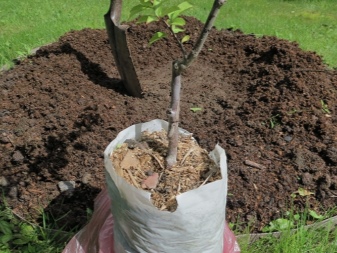
In the first decade of summer, nitrophosphate should be added. The concentration of the solution is 0.3%. Use it in a foliar way. Between August 10 and 20, 0.06 kg of superphosphate and the same amount of potassium sulfate are used. They are dissolved in 10 liters of water. In August, it is also necessary to apply a root feeding mixture, which includes:
- 0.015 kg of potassium sulfate;
- 0.015 kg superphosphate;
- 0.07 kg of ash;
- 10 liters of clean cold water.
Shaping plum trees means pruning them. This procedure is carried out only on healthy plants. Saplings of the first year are cut to 1 m; with an expanded crown shape, the stem should have a height of 0.7 m, and with a pyramidal one - 0.5 m. Plums of the second year of development are shortened by 1 bud from growth, and new shoots are cut by 0.1 m - so that the stem becomes thicker. Trees in the 3rd year are shaped differently. The stems must be completely cleaned of lateral shoots. Last year's growth is cut by 50%. In the future, it is undesirable to cut off skeletal branches. Early spring is optimal for crown formation in any year, when the juices have not yet begun to move.
In spring, plum trees are treated with insecticides. This should be done again when the buds open. However, at the beginning of flowering, processing is immediately stopped. In the summer, tried and tested safe means are used to counteract fungal infections, ticks and moths.
In autumn, all the foliage must be collected and burned; it is absolutely impossible to use it for compost.
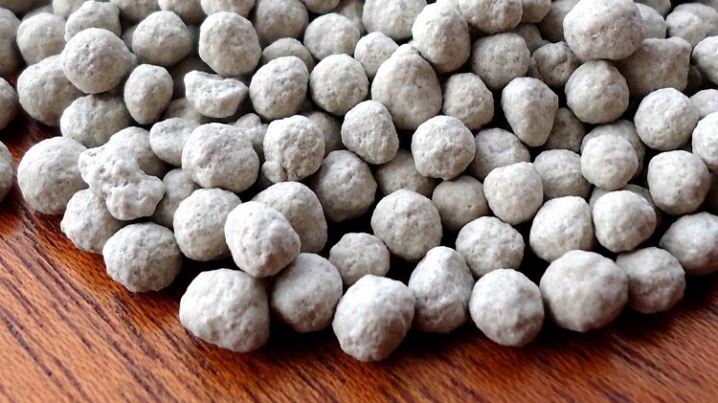













The comment was sent successfully.